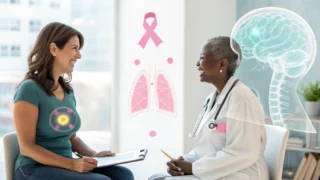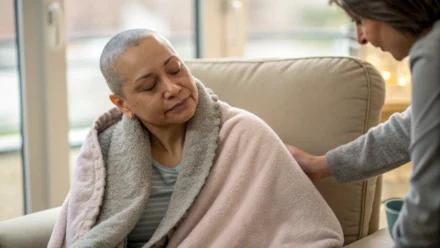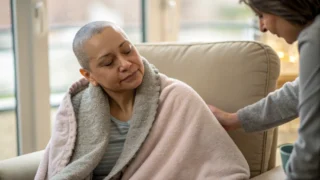In this video I introduce the wide world of cancer treatments: what the main types are, who decides and delivers them, how treatments are combined or sequenced, and the key factors that shape treatment choices. Below I expand on those ideas in a clear, practical way so you can understand the options and trade-offs involved.
Outline
- What are the main treatment modalities?
- Who is involved in treatment decisions?
- Treatment intent: curative vs palliative
- Timing and combinations: neoadjuvant, adjuvant, concurrent
- How treatments are selected: tumour, treatment and patient factors
- Practical summary: the questions clinicians ask
What treatment modalities are available?
Broadly, cancer treatments fall into three categories: surgery, radiotherapy, and medical therapies. Each has different goals, methods, and side-effect profiles, and they are commonly used in combination.
Surgery
Surgery aims to physically remove the tumour. It is frequently used with curative intent, but can also be palliative to relieve symptoms—for example when a tumour causes bowel obstruction or compresses the spinal cord. The role of surgery depends on the tumour type, location and how far the disease has spread.
Radiotherapy
Radiotherapy uses targeted high-energy rays (such as x-rays or electrons) to kill cancer cells. It can be delivered externally by a machine aimed at the tumour, or internally by placing radioactive material close to the cancer (brachytherapy). Radiotherapy is used both to cure and to control symptoms.
Medical therapies
This is a broad category covering drugs and systemic treatments:
- Cytotoxic chemotherapy — drugs that kill fast-dividing cells and are commonly used across many cancers.
- Hormone therapies — used when cancers are driven by hormones (e.g., some breast and prostate cancers).
- Targeted therapies — small molecules designed to inhibit mutated proteins specific to certain cancers.
- Antibody therapies — monoclonal antibodies that bind targets on cancer cells.
- Immunotherapies — treatments that help the immune system recognise and attack cancer.
Who decides and delivers cancer treatment?
Decisions are not made by a single clinician but by a multidisciplinary team (MDT). Teams typically include:
- Medical oncologists — doctors specialising in drug treatments for cancer.
- Surgeons — perform operations to remove tumours.
- Clinical and radiation oncologists — plan and deliver radiotherapy.
- Radiologists and histopathologists — provide imaging and biopsy-based diagnosis, staging and grading.
- Specialist physicians (e.g., gastroenterologists) — may contribute to diagnosis and organ-specific decisions.
- Palliative care clinicians — involved when symptom control and quality of life are priorities.
- Specialist nurses — central to communication, treatment delivery and monitoring.
Treatment intent: curative vs palliative
Treatment intent is one of the first considerations:
- Curative (radical) treatment aims to eradicate the cancer completely.
- Palliative treatment accepts that cure is not realistic and focuses on symptom control, improving quality of life and, where appropriate, extending life.
“Symptom control is really the most important part” — this often outweighs modest extensions of life if those extensions carry heavy treatment burdens or severely reduce quality of life.
Timing and combination of treatments
The order in which treatments are given matters and has specific terminology:
- Neoadjuvant — treatment given before the main/primary treatment. Example: chemotherapy or radiotherapy before surgery to shrink a tumour and make surgery easier.
- Adjuvant — treatment given after the main treatment to reduce the risk of recurrence. Example: chemotherapy after surgery to lower the chance of secondary tumours.
- Concurrent (or synchronous) — therapies given at the same time (e.g., chemoradiation).
How are treatments selected?
Treatment choice is based on three broad groups of factors: tumour factors, treatment factors, and patient factors.
Tumour factors
These include the cancer type (histology) and how far it has spread (stage). Histology is usually determined from a biopsy; staging from scans. Tumour biology and spread are key in determining whether cure is possible and which modalities are likely to help.
Treatment factors
These concern what treatments are available, how effective they are likely to be, and the risk of significant side effects. Accessibility and local expertise can also influence choices.
Patient factors
Patient fitness, comorbidities, and preferences are fundamental. The most effective curative treatment may not be appropriate if someone is unlikely to tolerate it.
Clinicians commonly use the ECOG performance status to gauge fitness for treatment:
- 0 — Fully active, able to carry on all pre-disease activities without restriction.
- 1 — Restricted in physically strenuous activity but ambulatory and able to carry out light work.
- 2 — Ambulatory >50% of waking hours; capable of self-care but unable to work.
- 3 — Capable of limited self-care; confined to bed or chair >50% of waking hours.
- 4 — Completely disabled; cannot carry on any self-care; totally confined to bed or chair.
- 5 — Dead (used in research contexts).
Because many curative therapies are physically demanding, a poor performance status (e.g., ECOG 3–4) often steers the team toward less intensive or palliative approaches.
Finally, patients must be fully informed about risks, likely benefits and alternatives, and their values and preferences should guide the final decision.
Practical checklist: the main questions clinicians ask
- What type of cancer is this (histology)?
- How far has it spread (stage)?
- Is the disease potentially curable?
- Which treatments are available locally and how effective are they likely to be?
- What are the likely side effects and how will they impact quality of life?
- How fit is the patient (ECOG/performance status) and are there comorbidities that limit options?
- What are the patient’s informed preferences and goals of care?
- If treatment is chosen, what is the optimal timing—neoadjuvant, adjuvant or concurrent?
Conclusion
Cancer treatment planning is a balance between tumour biology, what treatments can realistically achieve, the risks and side effects of those treatments, and the patient’s overall fitness and preferences. Surgery, radiotherapy and medical therapies each play important roles and are often combined to maximise benefit or reduce harm.
If you have questions about any specific modality (for example chemotherapy side effects, how immunotherapy works, or what to expect from palliative care), leave a comment and I’ll cover those topics in detail.










Leave a Comment